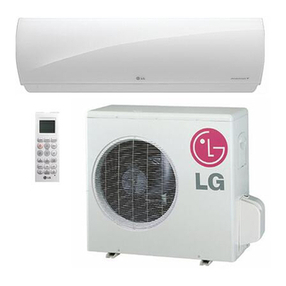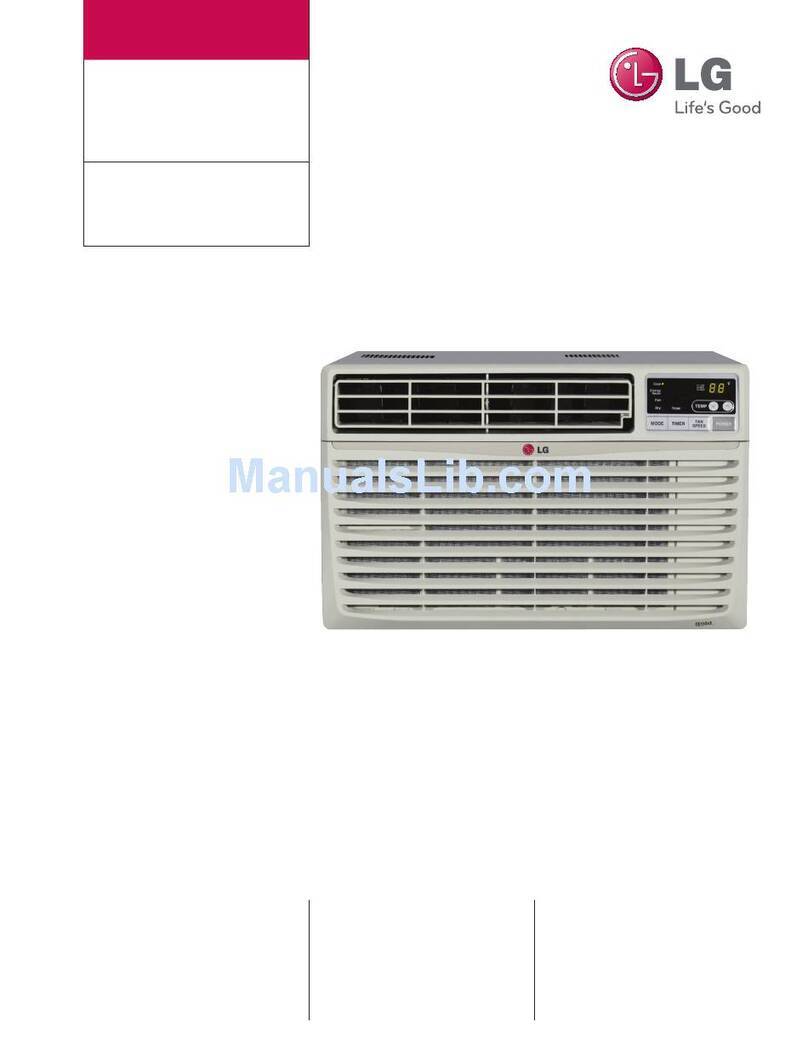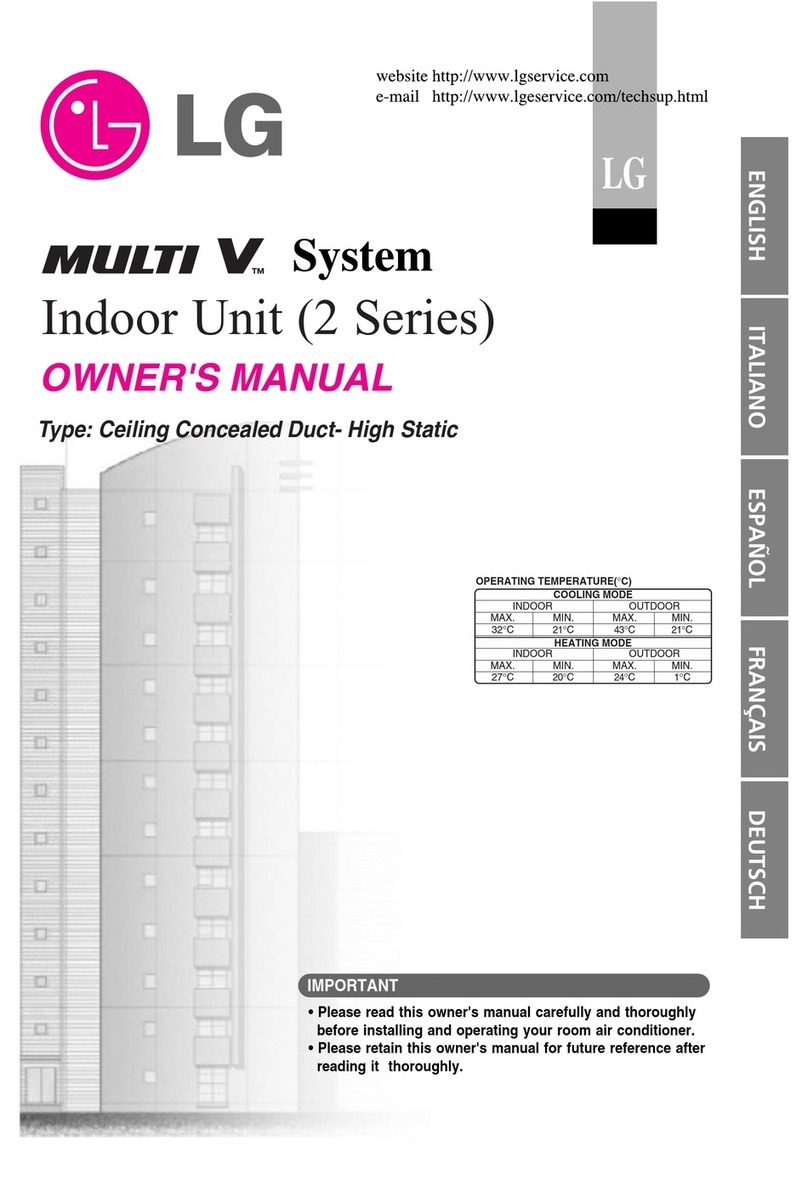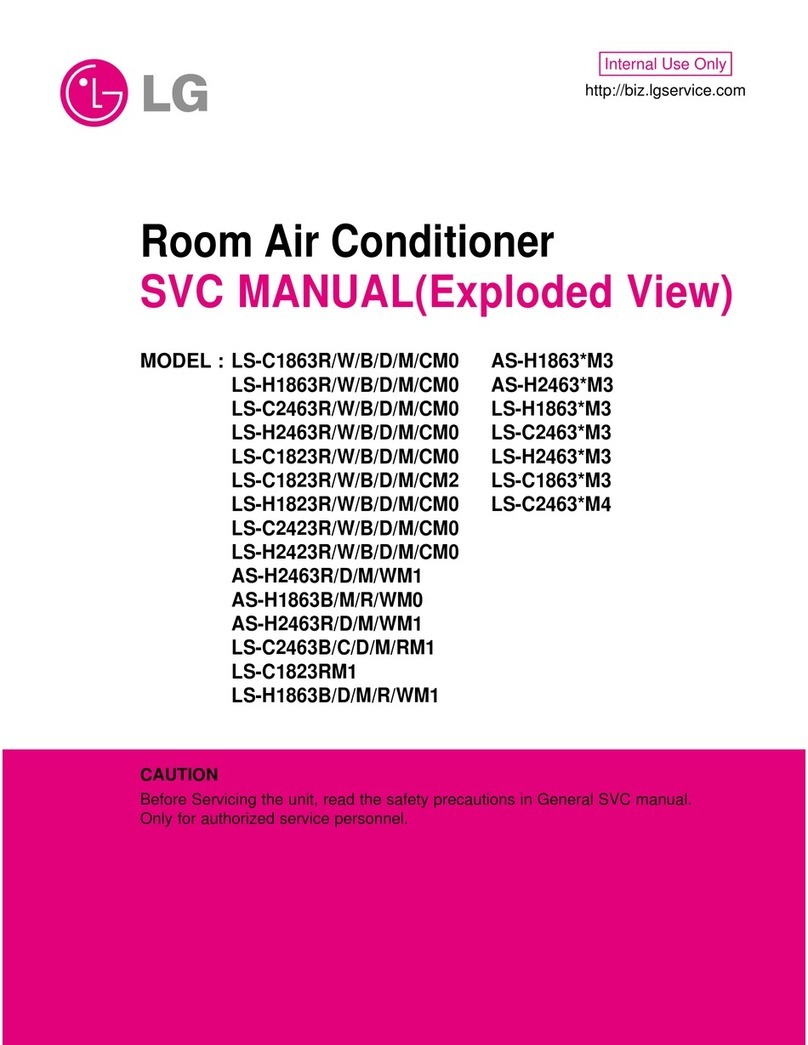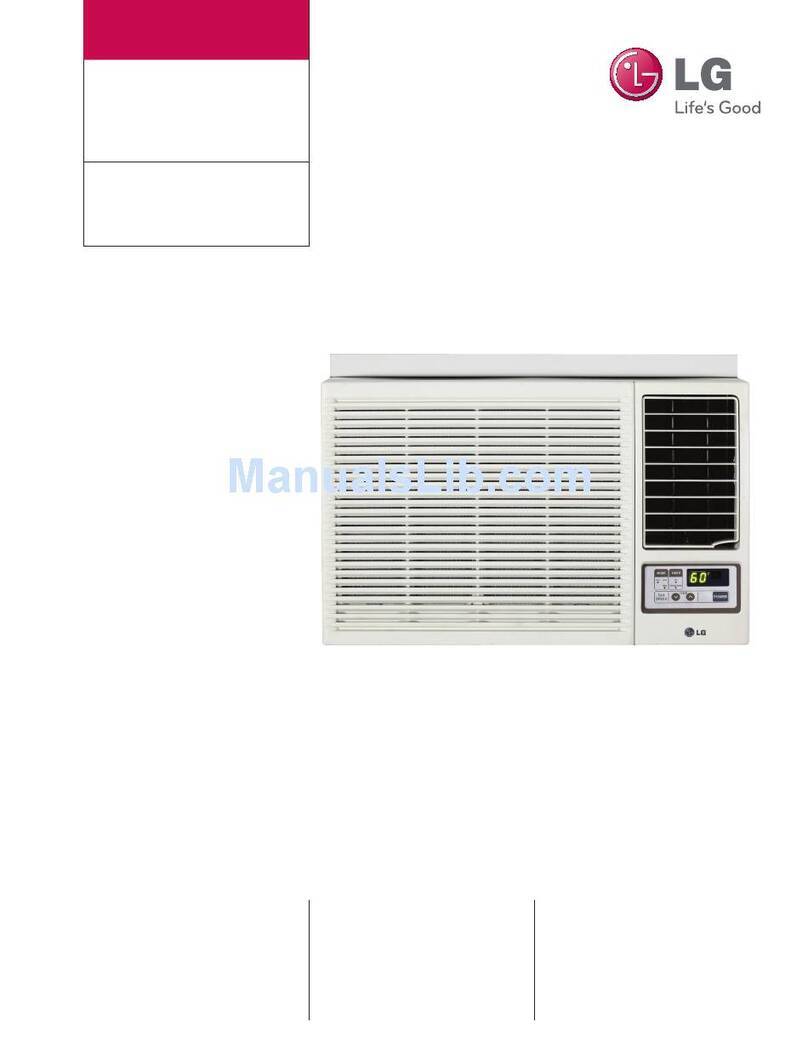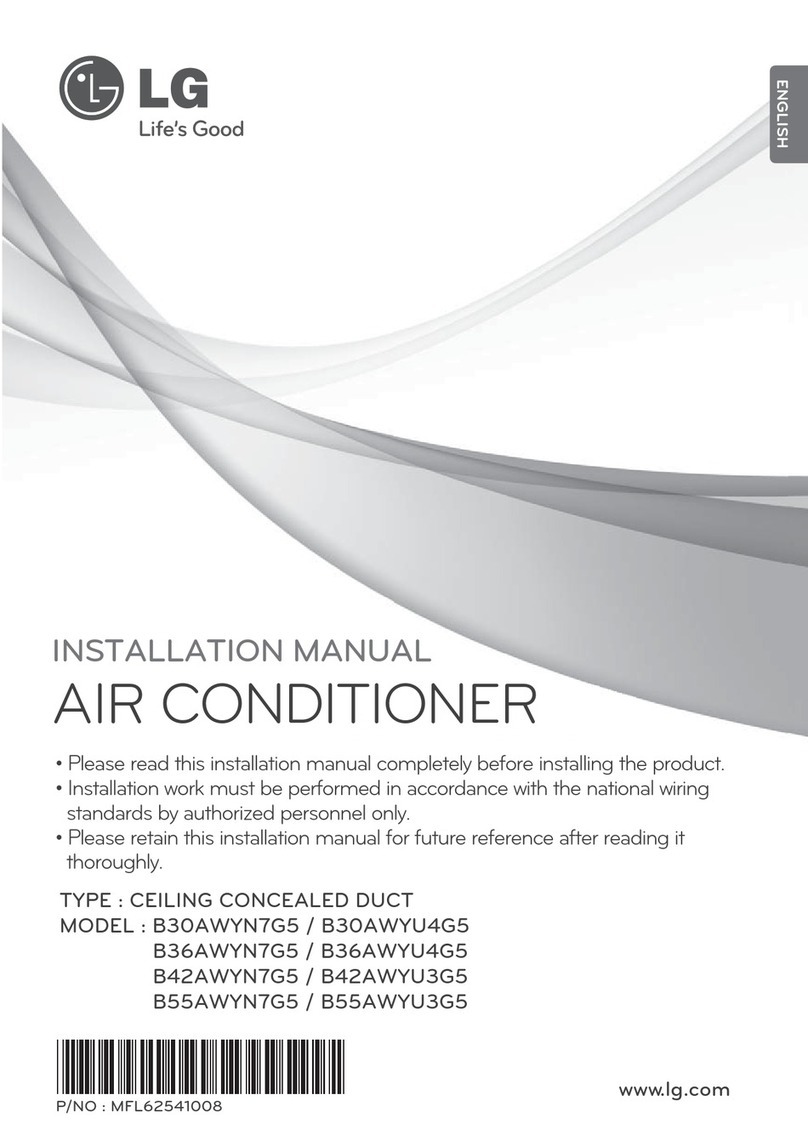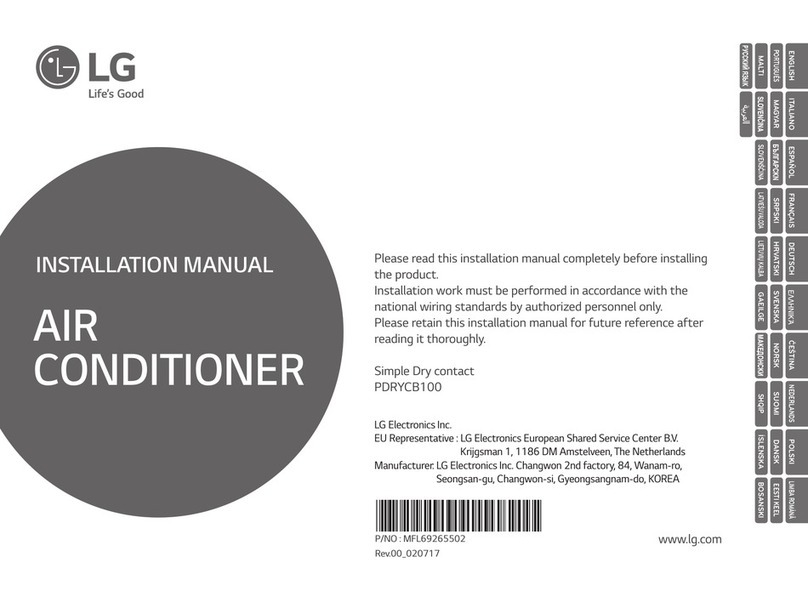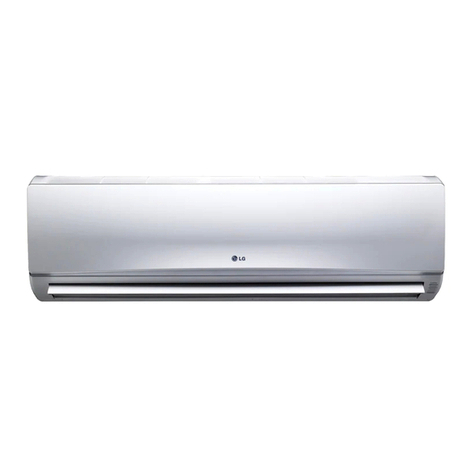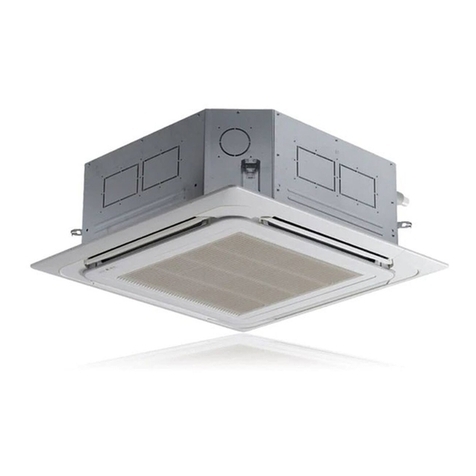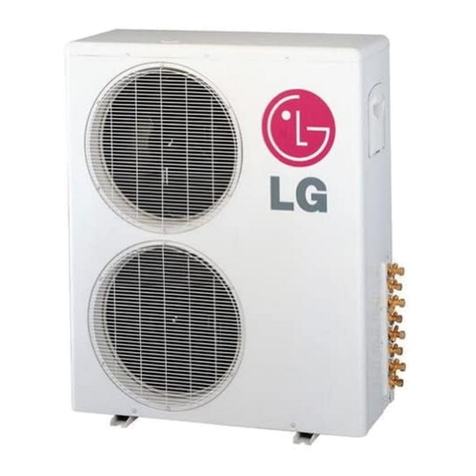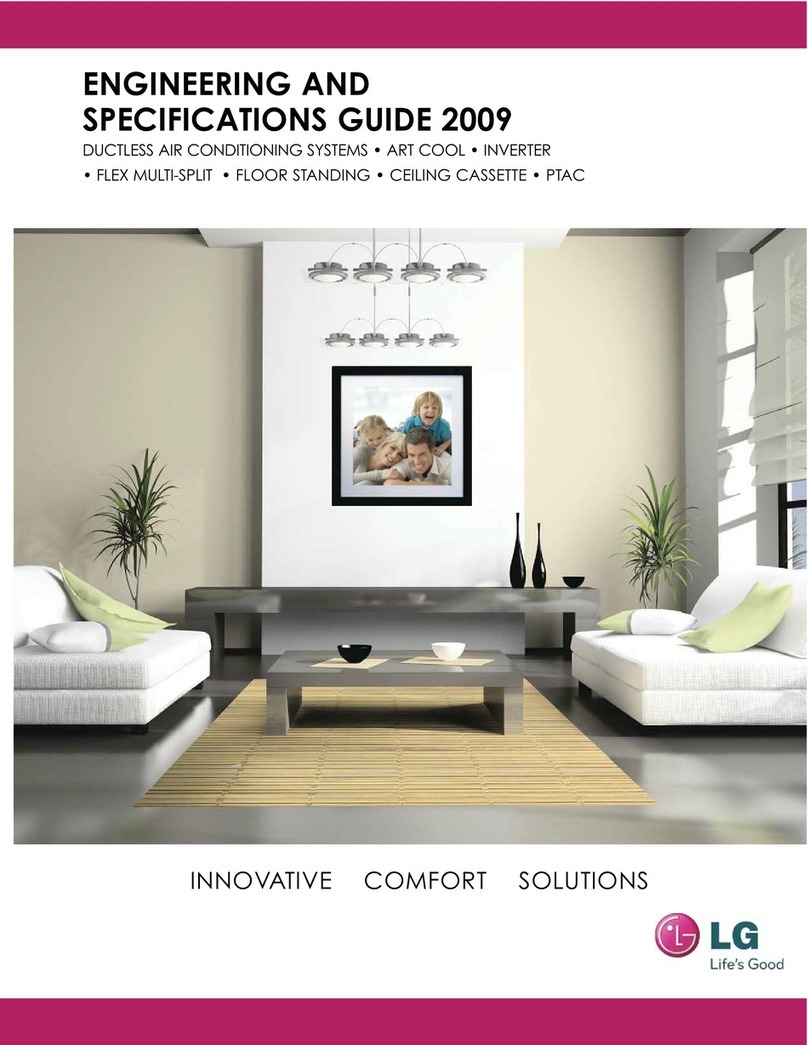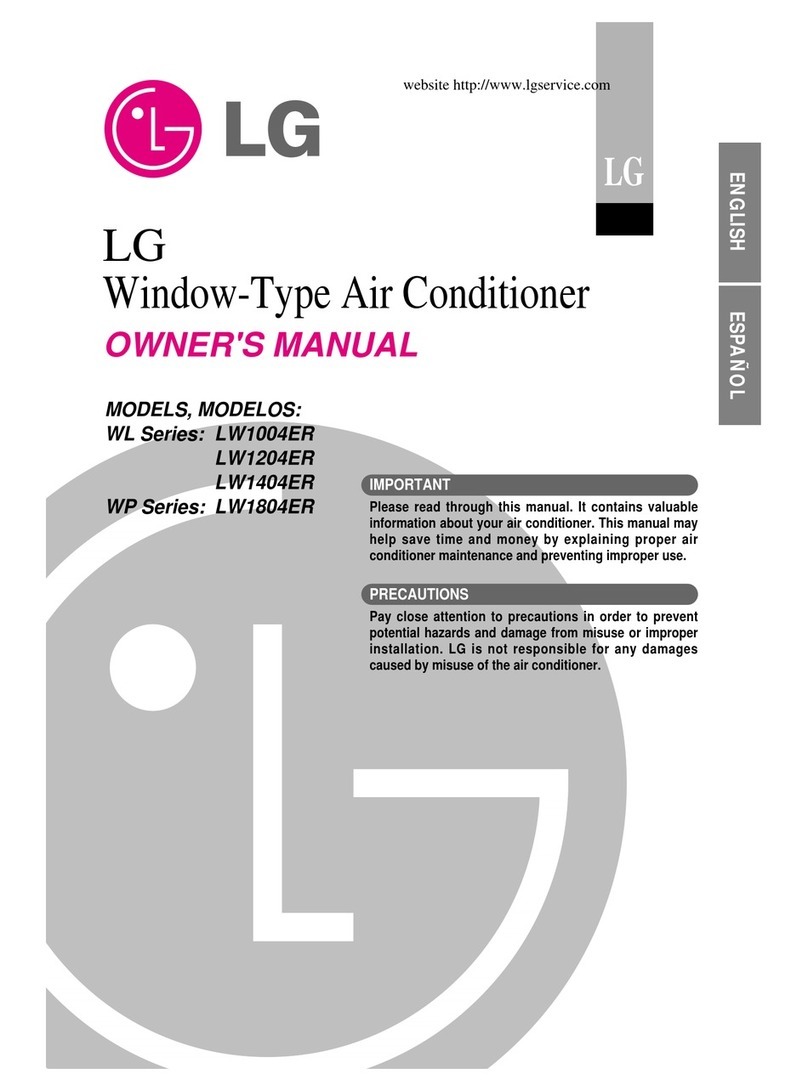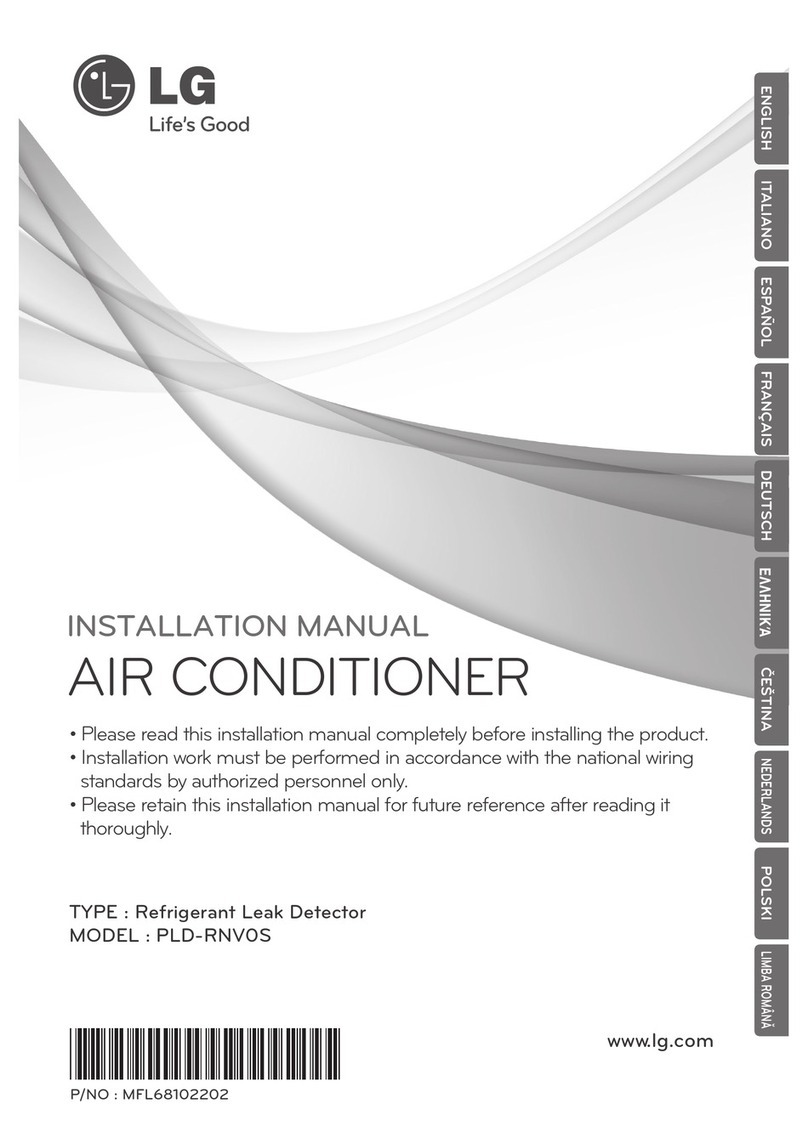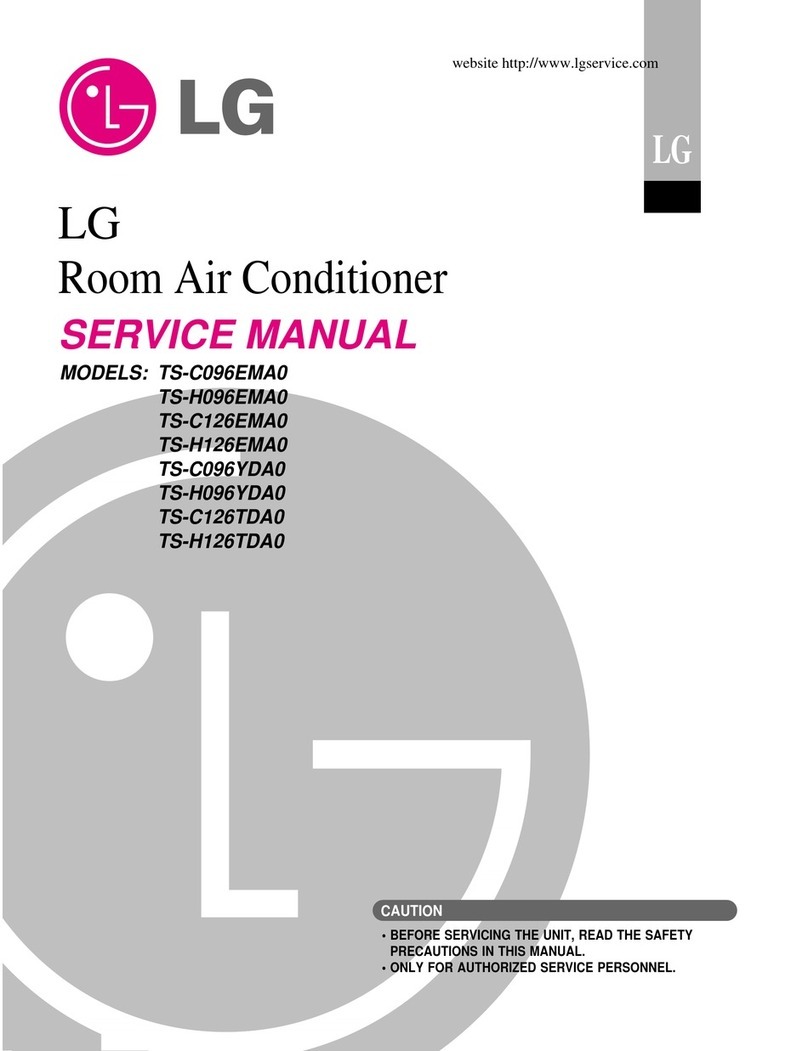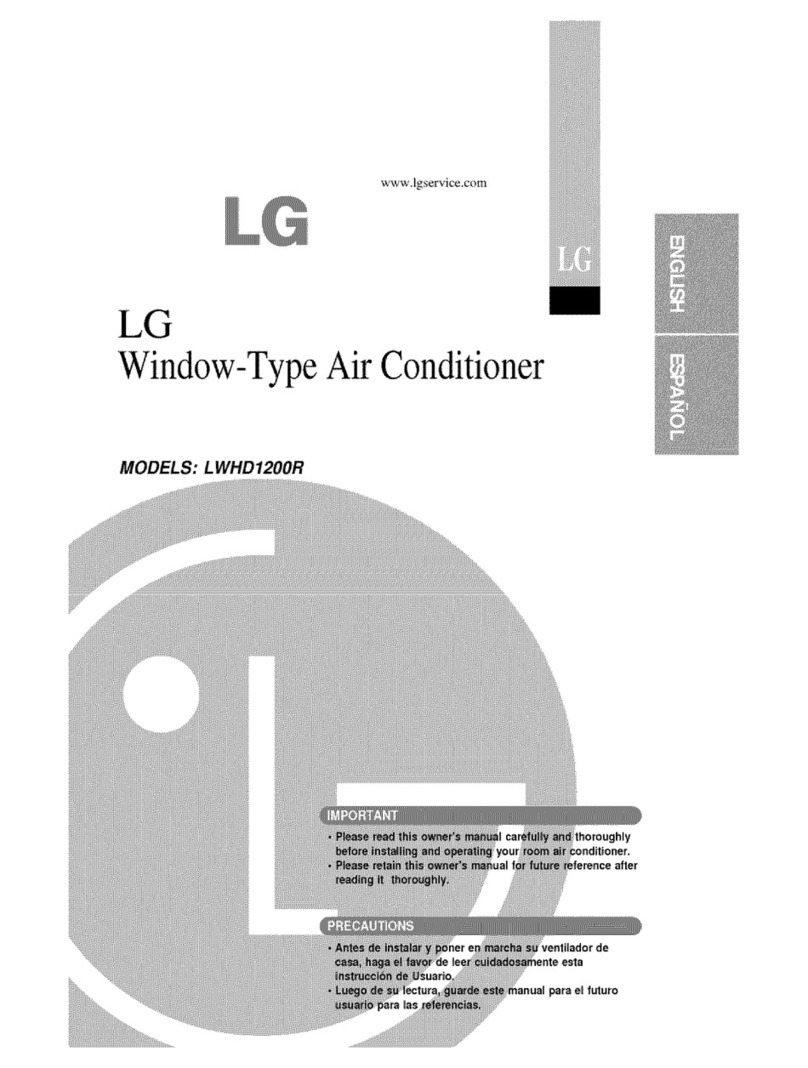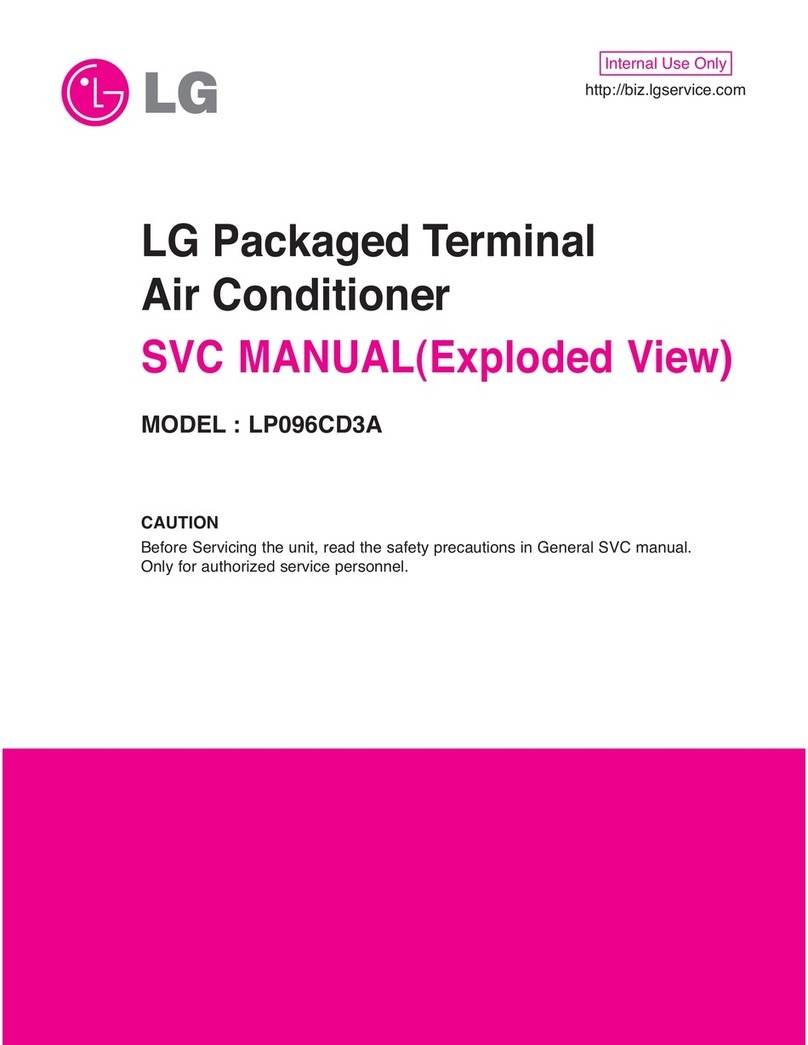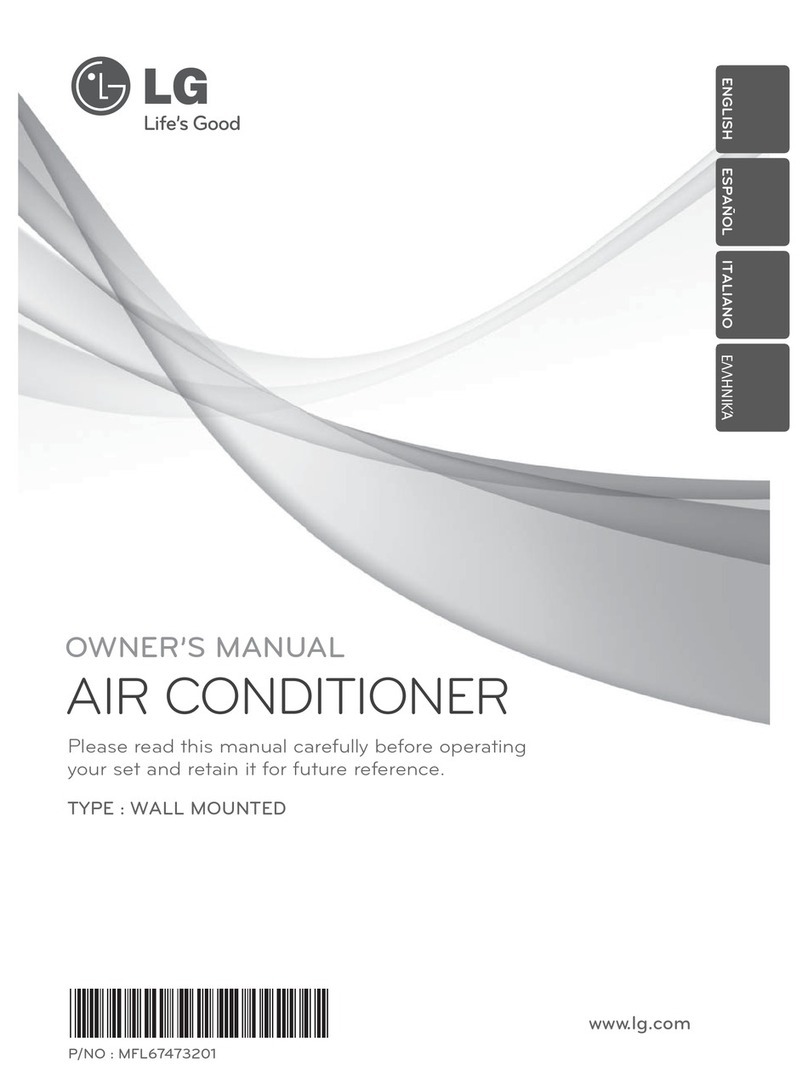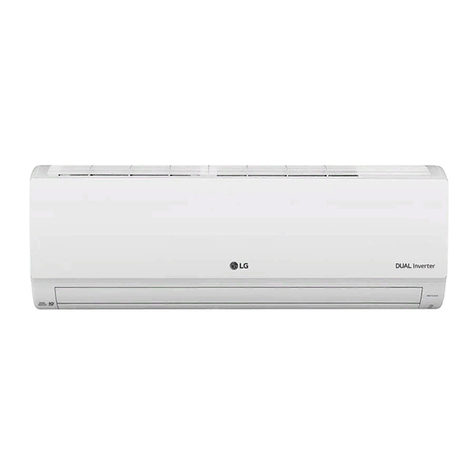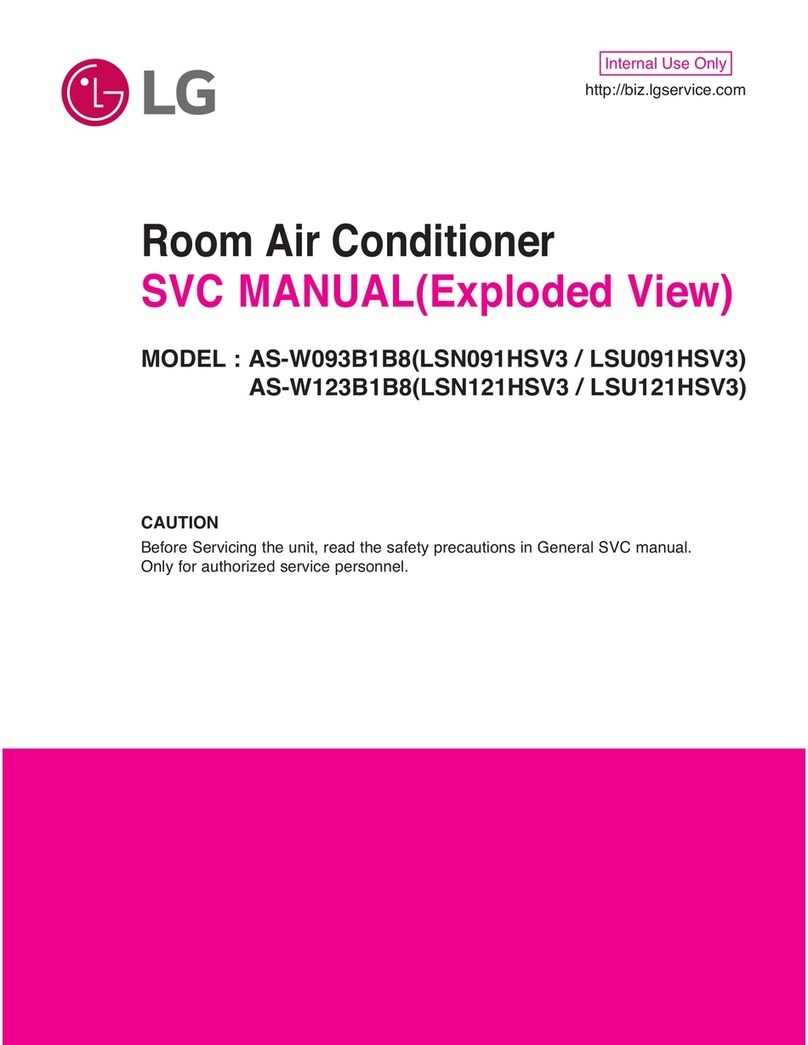IMPORTANT SAFETY INSTRUCTIONS
ENGLISH
5
Operation
• Do not extend or modify a power cord on your own.
- It may cause fire or electric shock.
• Use a dedicated power cord.
- It may cause fire or electric shock.
• Keep the air conditioner (control panel) from getting wet. Do not wash the air conditioner with
water.
- There is a risk of electric shock or failure of the air conditioner.
• Do not touch the main power switch with wet hands.
- It may cause fire or electric shock
• When the air conditioner is soaked (flooded or submerged), contact service center.
- It may cause fire or electric shock
• Do not touch the heat exchanger fins.
- The sharp fins may cause injury.
• Do not change the reconstruction and the setting of the protection devices.
- If the pressure switch, thermal switch, or other protection device is shorted or operated
forcibly, or unspecified parts are used, fire and explosion may result.
• Do not operate the air conditioner with the shutoff valve closed when gas leaks.
- Operating the air conditioner during gas leaks may result fire or explosion.
• Do not block the inlet or outlet of indoor/outdoor units.
- Since the fan rotates at high speed during operation, it may cause injury or failure of the aid
conditioner.
CAUTION
Installation
• Always check for gas leakage after installation or repair of the air conditioner.
- It may cause failure of the air conditioner.
• Do not install the product where the noise or hot air from the outdoor unit could disturb your
neighbors.
- It may cause a conflict with your neighbors.
• Keep level even when installing the product.
- Uneven height of the air conditioner may result a shaking and leakage.
• Do not install the air conditioner in an area where the gas leaks.
- If the gas leaks around the unit, property damage may result.
• Do not use the air conditioner for special purposes, such as storing works of art, animals and
plants, or sensitive devices.
- If the air conditioner is used for these purposes, property damage may result.
• Keep the unit away from children.
- The heat exchanger fins are very sharp. It can cause the injury, such as cutting the finger.
The damaged fins may result in degradation of capacity.
• When installing the unit in a hospital, communication station, or similar places, provide suffi-
cient protection against noise.
- The inverter equipment, private power generator, high-frequency medical equipment, or
radio communication equipment may cause the air conditioner to operate erroneously, or fail
to operate. On the other hand, the air conditioner may affect such equipment by creating
noise that disturbs medical treatment or image broadcasting.
!












